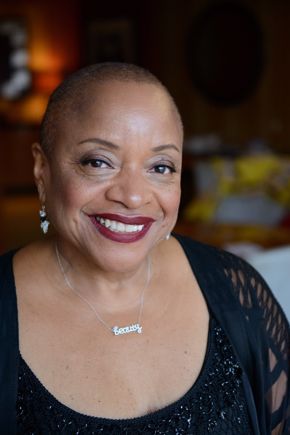Close-Up on “Black Art through the Lens” July 21, 2020
Artist, MacArthur Fellow, and New York University professor Deborah Willis moderates “Black Art through the Lens” via Zoom on Saturday, July 25, at 3 p.m. The second of five livestream panel discussions accompanying Soul of a Nation: Art in the Age of Black Power, it features three photographers whose work is included in the exhibition: Dawoud Bey, Adger Cowans, and Ming Smith. Here, Willis answers a few questions about the artists’ work and the impact of photography.
The photographers on this panel approach their work from distinct perspectives. How has each contributed to the narrative of contemporary photography?
All three invite us to bear witness to moments, as well as contemplate and appreciate their vision. The photographs awaken us to their lives and to different communities. I believe these photographs are also meant to encourage us to continue to find joy as we live through this difficult time. These photographers know that there is much more work to be done, and I hope our discussion will be another intervention as we learn more about how they make and create images.
Your writing and scholarship have explored the work of Black photographers for 30 years. Did photography play a particular role in the context of the art and expression of the decades (mid-1960s to mid-1980s) represented in this exhibition?
Photography is the space where I found my voice as an image maker and curator. I also see it as the ideal medium for advocacy as it helps me reflect on the critical work that activists, artists, and community members are using as the visual voice to expose injustices. Because of the camera, we are able to see history repeating itself. Images motivated communities in the North and South, informed social consciousness, and aroused public opinion in the early to mid-20th century.
In viewing photographs of social protest for human rights and civil rights, we are reminded that our actions today will affect the future, just as the actions of determined individuals did during the Civil Rights movement that changed the world regarding injustices against Black Americans. Photographers featured in Soul of a Nation played a crucial role by documenting their communities. Today, in covering organized mass demonstrations, photographers are directing their cameras on the harsh realities of why the movements around the country are necessary. The photographs in this exhibition remain timely.
What are you most interested in addressing with the photographers?
What makes a powerful image? I hope the speakers will explore themes on beauty, community, politics, sustainability, and the family. These photographers are committed to the narrative genre of the medium. They have explored conceptual projects to express their vision as well.
► Learn more about Deborah Willis and the artists on the panel.
► Join the virtual discussion on Saturday, July 25, at 3 p.m. Before or after, experience Soul of a Nation: Art in the Age of Black Power at the MFAH, the final venue for the exhibition’s three-year tour. Plan ahead for your visit.
This virtual lecture series receives generous funding from Humanities Texas, the state affiliate of the National Endowment for the Humanities.






